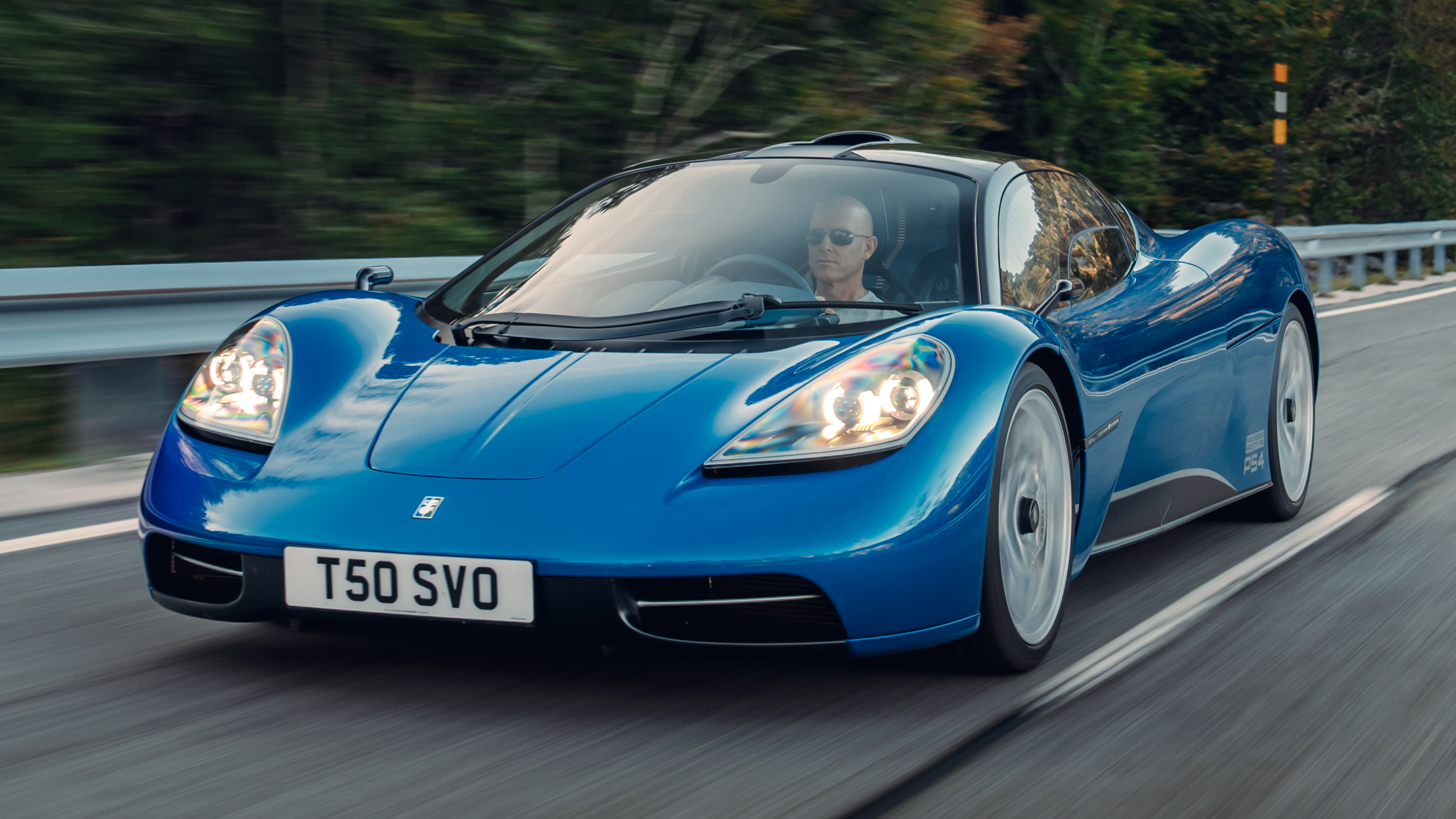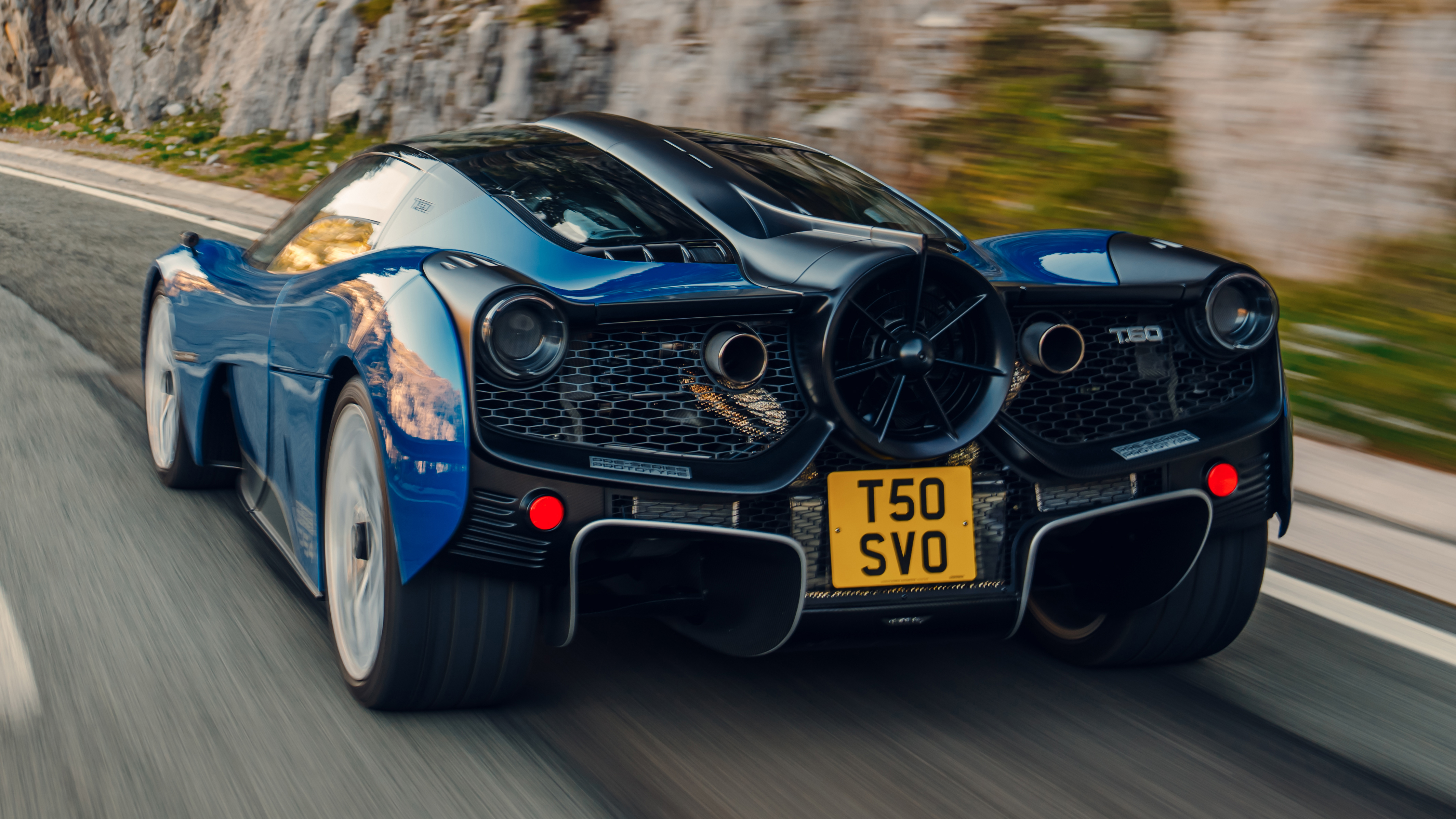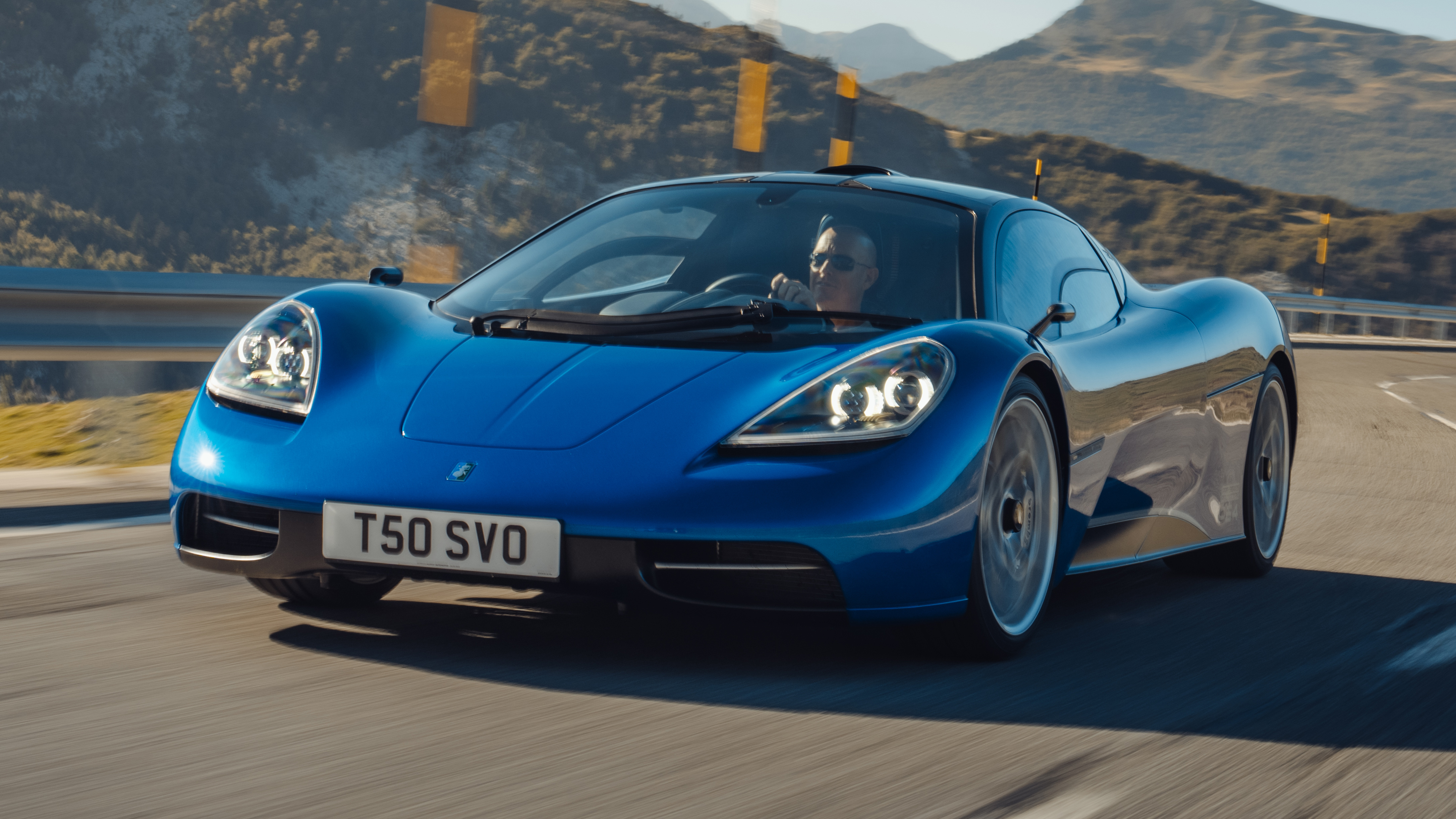
Gordon Murray Automotive T.50 review
Good stuff
The best driver’s car in the world
Bad stuff
No cupholders
Overview
What is it?
Broad question, so let’s give you a broad answer. It’s the successor to the McLaren F1. It’s a packaging masterpiece to rival a Smart ForTwo. It’s home to the best road car engine of all time. It’s old fashioned yet hugely relevant. It’s the most fuel efficient hypercar we’ve ever tested. It’s perhaps the most perfectly analogue sports car of the last 25 years. It’s the most addictive driving experience available today. Other superlatives will follow, but in basic terms it’s the lightweight three-seat hypercar with the 12,100rpm V12.
IS IT ACTUALLY A HYPERCAR?
Someone’s keen to play devil’s advocate. If you’re a numbers person, then the GMA T.50 probably doesn’t stack up. It’s £2.8 million (£2.36 million plus VAT) yet with only 664bhp has less power than a McLaren Artura. Hypercars also tend to be gloriously OTT rolling artworks, cars that have outgrown driving in their quest for impact. Not the T.50. All that matters here is the driving. It’s small and relatively unadorned. And if push came to shove we’d say this aligns more with driver’s cars such as the Lotus Exige, Porsche 911 GT3, McLaren 600LT or Alpine A110 than it does with a Zenvo, Pagani, Bugatti or Koenigsegg. But mainly it’s a happy blend of both.
SO HOW FAST IS IT? WHAT’S THE 0-60MPH? THE QUARTER MILE TIME?
Still with the numbers, I see. Easy answer: GMA doesn’t know. It hasn’t measured acceleration because it’s not interested. Gordon Murray, the man behind the McLaren F1 and whose brainchild this is, knows it will be fast, but cares about sensation and experience far more than facts and stats.
They do know the top speed: 226mph. But only because they had to do it for ESP calibration. And that’s with the shorter of the two sixth gears. You can have a longer one for better cruising – and potentially a higher top speed provided it will pull it. But GMA doesn’t currently know if it will.
The McLaren F1 set incredible records 30 years ago (0-60mph in 3.2 seconds, 100mph in 6.3s and top speed of 240mph), but a car with a similar technical make-up these days - rear-drive, with a manual gearbox - is never going to be as fast as a Tesla Plaid let alone a Rimac Nevera. Electric power has rewritten the landscape of speed. Still, it’s worth pointing out that all these years later the F1 remains the fastest naturally aspirated road car ever.
WILL THE T.50 BEAT THE F1 AT THAT?
Almost certainly. It may not have as much torque as the F1 (353lb ft at 8,000rpm vs 479lb ft at 5,600rpm), but it has more power (664bhp plays 627), better aero, traction and it’s nigh-on 150kg lighter. More importantly it’s the fastest feeling car we’ve ever driven. More akin to a superbike or supercharged Ariel Atom than a normal supercar. Thank the lack of weight for that. At 997kg, most rivals are at least 50 per cent heavier. What’s exotic about the T.50 isn’t the artistry, but the engineering itself, the materials used, the rigour and focus applied to every element.
The Cosworth-built 4.0-litre V12 is a masterpiece, not only the highest revving road car engine ever, but the fastest revving, able to gain 52,000rpm per second. Consider that for a moment. It’s bananas. The V12 drives the rear wheels through a six speed manual gearbox from F1 specialists Xtrac. So tractable is the engine that fifth gear is known as the ‘speedbumps to 186mph gear’.
WHAT TECHNOLOGY DOES IT FEATURE?
It’s more about what it doesn’t have. No power steering. No twin clutch gearbox. No touchscreens. No adaptive dampers. No nose lift. No cupholders. A Sport mode that adjusts nothing but the throttle. No turbos. No wings. No fuss and no bother.
Gordon says “it’s all about honouring and improving the F1”, but it’s perhaps more interesting to consider that 30 years on, technology has seemingly added very little to enhance the driving experience. It’s helped in other places. The headlights weigh only 2.1kg each and yet throw a block of light miles down the road, and the entire 10-speaker, 700W Arcam sound system weighs just 4.3kg.
The main advanced tech feature are the mirror cameras, necessitated by the central driving position (to get the right view, conventional mirrors would have had to be mounted by the headlights). The screens are clear to view and mounted exactly where you want them, but as with all these systems the flank view is compromised.
HOW ABOUT THE FAN ON THE BACK?
Yeah, that’s the thing everyone talks about. It delivers up to 220kg of downforce at 155mph, 460kg at Vmax. Basically it pulls air from the rear diffuser and blows it out the back, lowering underbody pressure. It runs at up to 7,000rpm, and you hear it when you’re driving.
But there are other modes, switchable by a knob on the left-hand binnacle, including Streamline which closes the floor vents, sends the flaps down 10 degrees and pulls air from the engine bay, giving virtual long tail aerodynamics.
The fan is really there to add stability, not downforce and more grip. The fact this lightweight car isn’t buffeted when it overtakes trucks and sits so calmly at speed speaks of effective aerodynamics.
SO WHAT’S IT LIKE TO DRIVE?
Obviously we’ll go into more detail on this in the Driving tab, but it starts with the seating position. The symmetry of the central seat and the dash layout soothes the brain. Then it’s the operation of the controls: the throttle pedal is not only gorgeous to look at and incredibly light, but the springing of it, the way it works – and this is going to sound silly – in both directions, following the movement of your foot so precisely, makes it the finest pedal we’ve used in any car ever.
And that relentless focus has been applied everywhere. True, it’s tricky to get off the line without the revs soaring, but get it rolling with the clutch alone, then feed some power in after and you’ll be away smoothly.
Low speeds aren’t its favourite: the suspension is stiffly sprung, the steering heavy (although some assistance is clutched in below 10mph), the gearchange sharp. It likes to be driven. And when you do, you discover that Gordon Murray and his team have created arguably the finest driving device ever conceived. It’s not just the tangible driving stuff that stands out here. Other cars celebrate the engine or the chassis. The T.50 celebrates everything. And because it gives you so much, you respond to it not as a machine but something more human. You want to do your best for it, rather than trying to get the best out of it. It sucks you so deep into the experience that you don’t need to be travelling quickly, because you get so much from it at all speeds. That’s unique.
Want to hear us talk about driving the T.50 across the Pyrenees for this review? Click these words.
IS THERE ANYTHING ELSE LIKE THE T.50?
Not really. There’s artistry from Pagani, incredible innovation from Koenigsegg, but GMA’s superpower is driver interaction, something that’s best delivered by making it as light and analogue as possible.
It’s so refreshing to find a car that doesn’t focus on giant numbers, because that chimes with what we’ve been saying for a very long time – bigger numbers aren’t better. They tend to bring more weight and complexity, more electronic control to oversee and help out. That’s what sets the T.50 apart from every other hypercar. They all filter the experience, send signals through processors, reducing your connection while increasing their capability. It’s clever stuff, allows them to travel faster, but airbrushes the experience.
YOU MENTIONED PACKAGING UP TOP? IS IT PRACTICAL?
It has the same footprint on the road as a Porsche 718 Cayman, yet it seats three (admittedly the two outer seats are a struggle if you over six feet) and packs in 228 litres of load space between the two side lockers. There’s also plentiful useful cabin storage under the outer seats and in lockers, and the layout and tactility of the switchgear has to be experienced to be believed.
WHERE DOES THE NAME COME FROM?
Every car Gordon Murray designs gets numbered. The T stands for Type, and this is his 50th design. There’s a lovely plaque inside the luggage cover that lists Murray’s achievements reaching back to the T.1 in 1967. The McLaren F1, incidentally, was T.22.
What's the verdict?
You could drive The T.50 every day because it’s viceless, easy to see out of and has generous speedbump clearance (no noselift here, it would’ve added weight). Yet it’s also raw, pure and unfiltered. Driving it is a sensory bombardment: the V12 fills your ears, the steering tingles with feedback, the engine is a constant presence, you find yourself changing gear for the sake of it. It sucks you into its orbit and never lets you go.
This is reductive engineering at its finest. It’s not just the weight loss, it’s the removal of everything that interferes with driving. The result taps more deeply, intuitively and rewardingly into your driving centres than any road car we’ve ever driven. Total immersion.
‘The last great analogue supercar’, that’s the promise Gordon Murray made, and he’s held up his end of the deal in stunning fashion. With the electric era upon us we can’t see anything coming along to usurp it. So let’s call it: it will never get better than this.
Featured

Trending this week
- Car Review
Ferrari Amalfi
- Long Term Review
Is the Suzuki Swift still the best small car money can buy?






